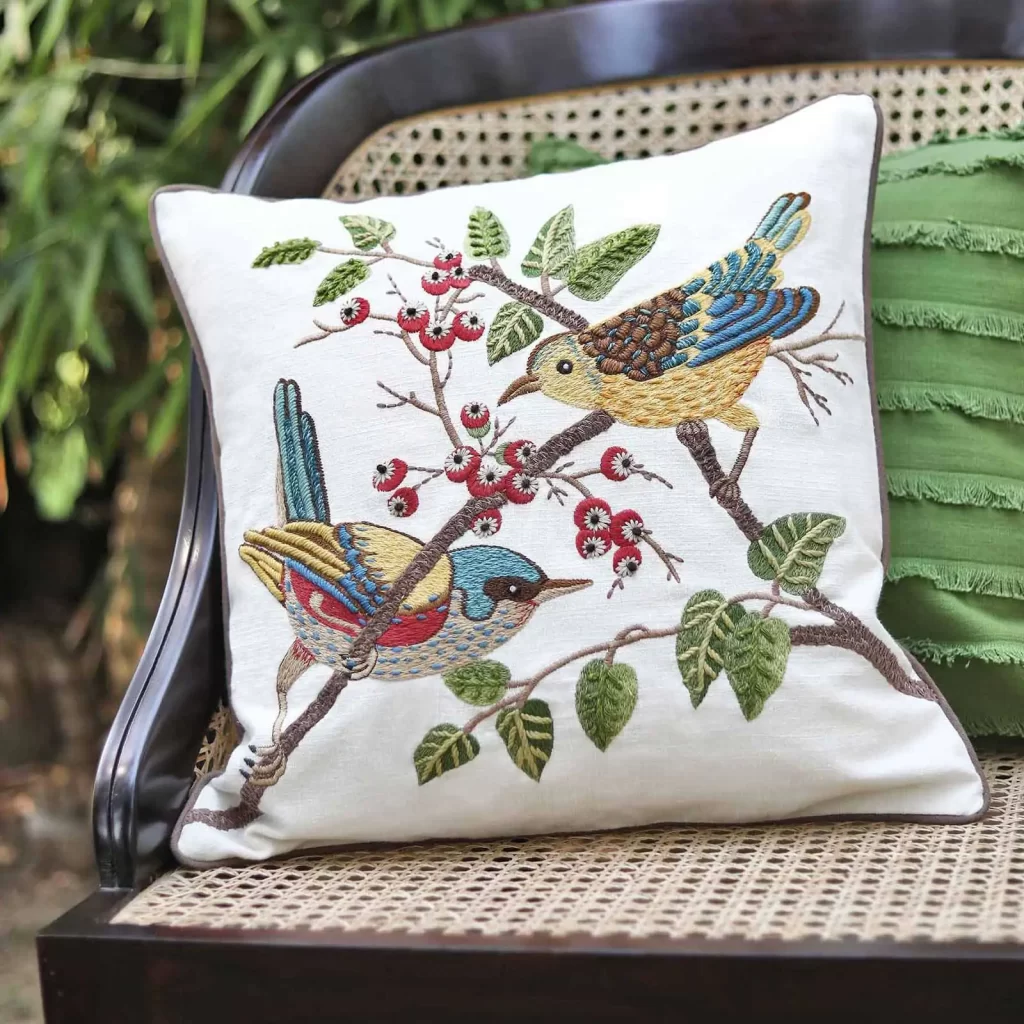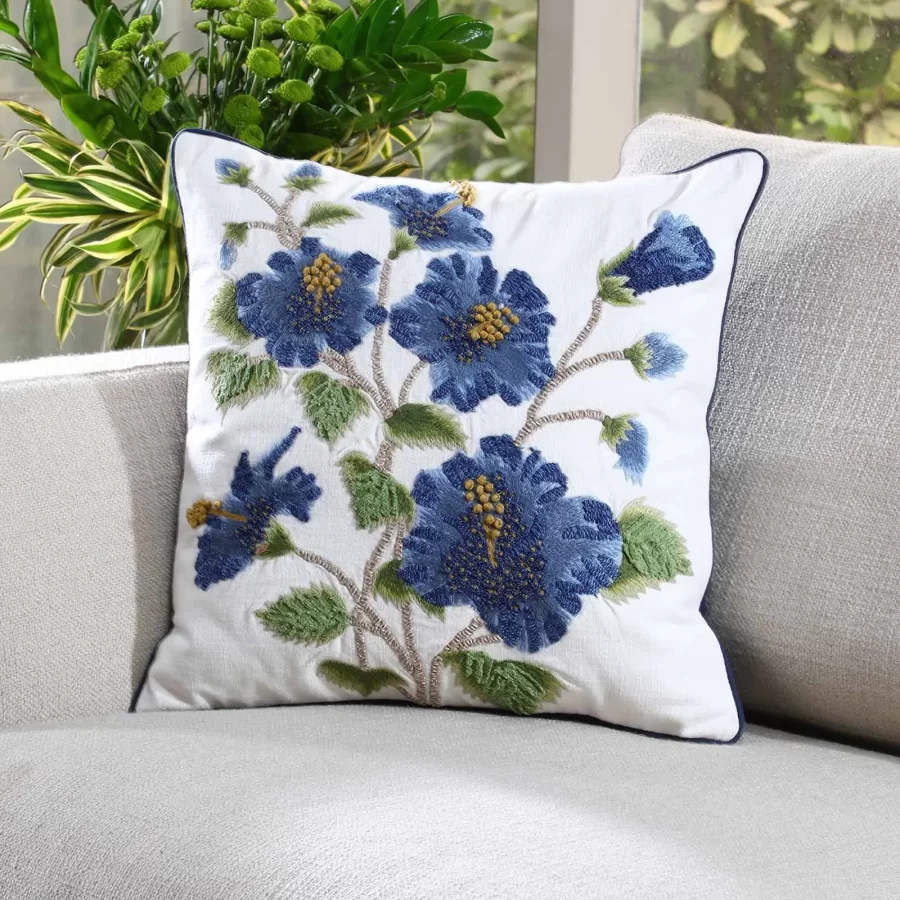Introduction
Pillows can dramatically impact the aesthetic of a room, serving both functional and decorative purposes. While the pillow itself is essential for comfort, the pillow cover plays a pivotal role in transforming your space. In this comprehensive guide, we’ll explore how to choose the perfect pillow cover, enhancing your decor while offering tips and tricks for styling.
Understanding Pillow Covers
What is a Pillow Cover?
A pillow cover is a removable fabric envelope or case that encases a pillow insert. They come in various fabrics, colors, patterns, and sizes, making them a versatile element of home decor. Pillow covers not only protect your pillow from dirt and wear but also provide an opportunity to express your style and coordinate with existing decor.
Types of Pillow Covers
- Throw Pillow Covers: These are typically smaller and used for decorative purposes on couches, chairs, or beds.
- Euro Pillow Covers: Larger, square-shaped covers often used on beds for a layered look.
- Lumbar Pillow Covers: Rectangular pillows that provide support while enhancing the design of furniture.
- Decorative vs. Functional Covers: Decorative covers focus on aesthetics, while functional covers prioritize comfort and usability, often seen with solid colors and basic designs.
Factors to Consider When Choosing a Pillow Cover
1. Material
The fabric you choose is crucial as it affects the look, feel, durability, and maintenance of the pillow cover. Common materials include:
- Cotton: Comfortable and breathable, suitable for casual and everyday use.
- Linen: Offers a textured, elegant appearance but requires more delicate care.
- Velvet: Luxurious and soft, perfect for adding warmth and opulence but may attract pet hair and dust.
- Silk: Ideal for a sophisticated look, but it can be slippery and requires special cleaning.
- Polyester: Budget-friendly and durable, suitable for high-traffic areas and easy to clean.
2. Pattern and Color
Patterns and colors can set the tone of your space. Here’s how to choose:
- Solid Colors: These provide a chic and minimalist look. Choose colors that complement your existing decor or create a striking contrast.
- Patterns and Textures: Stripes, florals, geometric shapes, and textures can add visual interest. When choosing a pattern, consider the size and scale in relation to your room. Larger patterns can make a bold statement, while smaller patterns can add subtle depth.
- Color Psychology: Colors evoke emotions. For instance, blues and greens promote calmness, while reds and yellows energize the space. Understand the mood you wish to create and select colors accordingly.
3. Size and Shape
The size and shape of the pillow cover affect how it fits into your decor scheme:
- Utilize Measurements: Measure your pillow inserts to ensure a proper fit. Common sizes for throw pillows include 18×18 inches and 20×20 inches, while lumbar pillows often measure 12×20 inches.
- Layering Techniques: Mix sizes and shapes for an eclectic look. Use larger pillows as a base and smaller or lumbar pillows in front for added depth.
4. Style Compatibility
Consider the style of your home when choosing pillow covers:
- Modern: Opt for minimalistic, geometric designs or monochromatic color schemes.
- Bohemian: Embrace bold colors, mixed patterns, and natural fabrics like cotton and linen for a laid-back vibe.
- Traditional: Choose classic patterns like damask or paisley and luxurious fabrics like silk or velvet.
- Mid-Century Modern: Look for graphic patterns, vibrant solid colors, and angular shapes.
5. Seasonal Changes
Changing your pillow covers with the seasons can provide an instant refresh:
- Spring/Summer: Opt for lighter fabrics and brighter colors or floral prints.
- Fall/Winter: Select warmer tones and plush fabrics, such as velvet or chunky knits, to create a cozy atmosphere.
Styling Your Pillow Covers: Tips and Tricks
- Mix and Match: Don’t be afraid to combine different textures and patterns. A cohesive color palette can help unify various designs.
- Layering: Use various shapes and sizes to create depth. Start with larger square pillows, then add smaller lumbar or round pillows.
- Statement Pieces: Consider having one or two stand-out pillow covers that serve as focal points in your decor. This can be achieved with bold colors or unique patterns.
- Seasonal Rotation: Store pillow covers for different seasons. By rotating your decor, you’ll keep your space fresh and inviting.
- Utilize Different Patterns: If your base colors are neutral, mix various patterns to create excitement. Just ensure they share a common color thread to maintain harmony.
Caring for Your Pillow Covers
To prolong the life of your pillow covers:
- Read the Care Label: Always check for specific washing instructions.
- Wash Regularly: Depending on use, wash your covers every few weeks to maintain cleanliness.
- Spot Cleaning: Address stains promptly. Use mild detergents and patch test before applying any cleaning agent.
- Storage: Store out-of-season covers in a cool, dry place. Be sure to clean them before storing to prevent mildew.
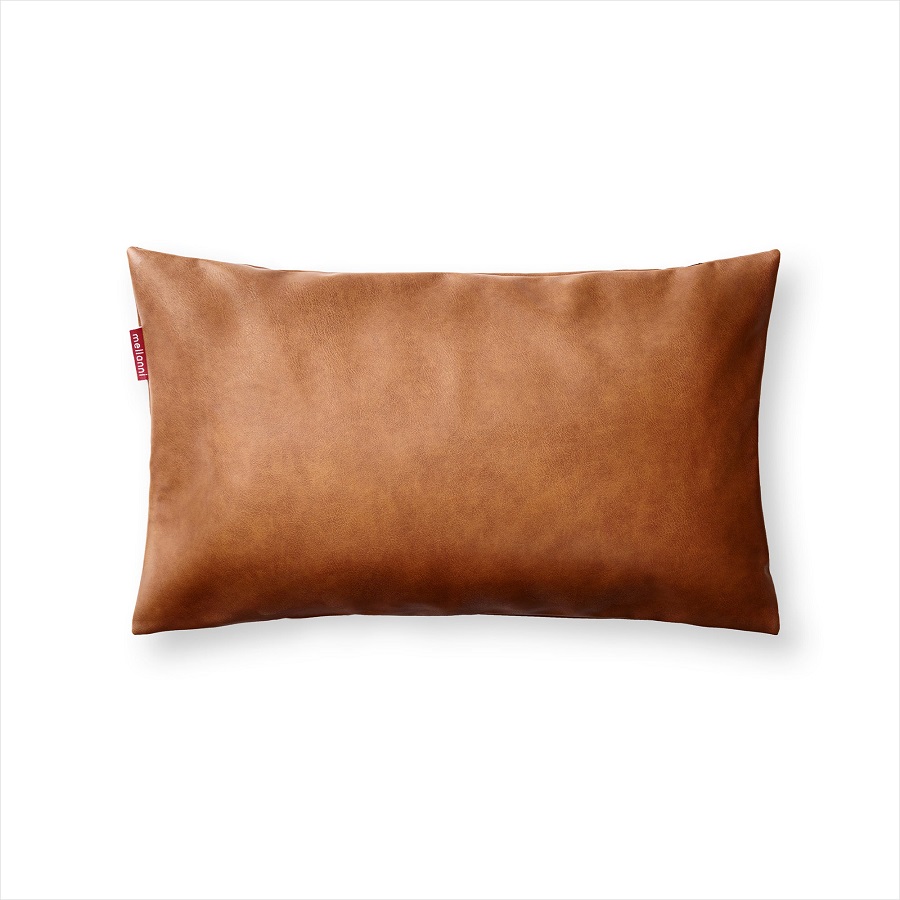
Why Choose DIY Pillow Covers?
Creating your own pillow covers allows you to:
- Personalize Your Style: You can choose fabrics, colors, and patterns that perfectly match your existing decor and personal taste.
- Save Money: Making your own pillow covers is often much cheaper than purchasing ready-made ones from stores.
- Explore Your Creativity: DIY projects allow your artistic side to shine as you experiment with different techniques, materials, and designs.
- Rejuvenate Old Pillows: Don’t throw away your old pillows; simply update them with fresh, new covers.
Materials Needed
Before you dive into the exciting world of DIY pillow covers, gather the following materials:
- Fabric: Choose cotton, linen, velvet, or hemp, depending on the desired texture and look. For seasonal occasions, consider themed fabrics like floral prints or holiday motifs.
- Sewing Machine or Needle and Thread: A sewing machine makes the process quicker, but hand sewing is also a viable option if you’re not a machine owner.
- Pillow Inserts: Ensure they are the right size for your desired pillow cover.
- Fabric Scissors: Invest in a pair of quality scissors to achieve clean cuts.
- Measuring Tape: Accurate measurements are key to a perfect fit.
- Iron and Ironing Board: To create crisp seams and finish the project professionally.
- Fabric Paint or Markers (optional): For adding designs or personalization to your covers.
Step-by-Step Guide to Making Basic Pillow Covers
Step 1: Measure Your Pillow
Start by measuring your pillow insert. Note that you’ll need to add an extra inch to each measurement for seam allowance.
Step 2: Cut Your Fabric
Using your measurements, cut two pieces of fabric – one for the front and one for the back. For a standard throw pillow, cut each piece approximately 1 inch larger than the pillow insert in both dimensions.
Step 3: Prepare the Fabric
To prevent future shrinkage and ensure a clean finish, wash and iron your fabric before sewing. This step is crucial to maintain the shape of your pillow after washing.
Step 4: Sew the Edges
- Place the two pieces of fabric right sides together.
- Sew along the edges, leaving a ¼ inch seam allowance and leaving one side open.
- For a simple envelope style, simply finish sewing each edge of the open side and then fold and sew an additional hem.
Step 5: Turn and Stuff
Once your cover is fully sewn, turn it inside out so the right side is now facing outward. Use a pencil or scissors to gently push out the corners for better definition. Insert your pillow into the cover and adjust to ensure a snug fit.
Step 6: Close the Opening
If you went with the envelope style, you can simply tuck in the flap to finish it. If you opted for a zippered option, sew in your zipper along the open side for easy removal.
Step 7: Iron and Display
Finally, iron any visible seams for a polished look. Place your new pillows on your sofa, bed, or favorite chair, and take a moment to admire your handiwork!
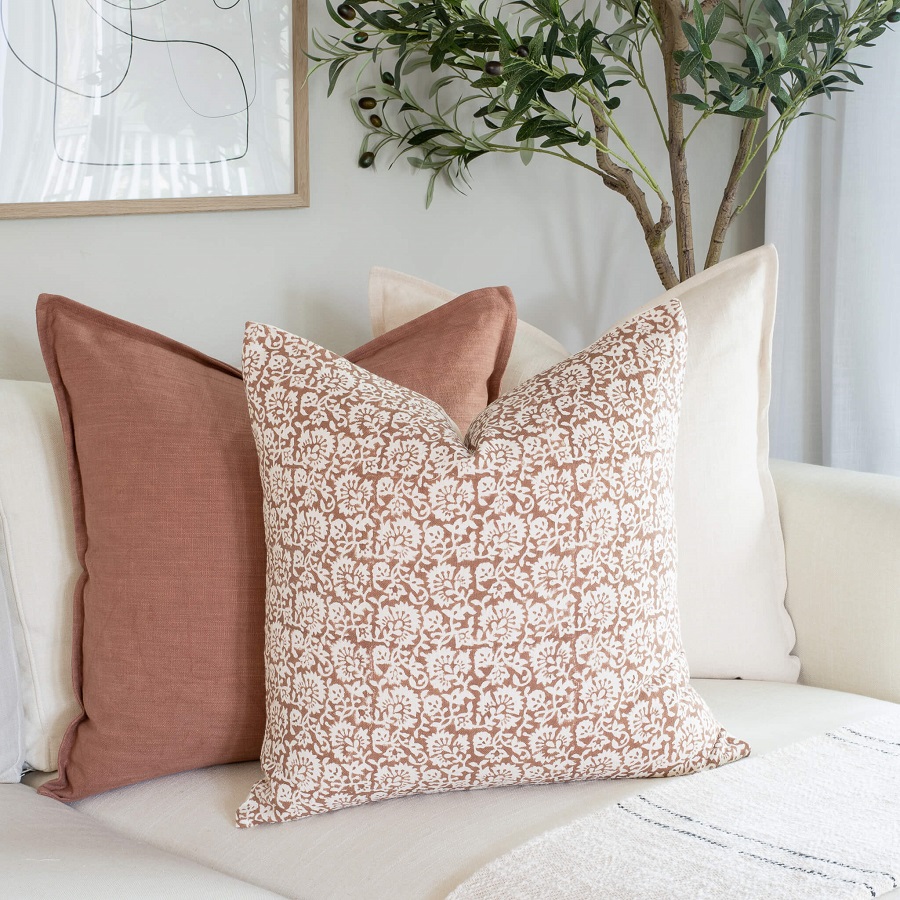
Creative Ideas for Custom DIY Pillow Covers
Now that you’ve mastered the basics, let’s explore some fun and creative ideas to inspire your next few projects.
1. Painted Fabric Pillows
If you’re feeling artistic, use fabric paint to create your own designs on plain fabric. You can create stripes, geometric shapes, or even hand-drawn illustrations. Don’t forget to use fabric medium if you’re painting with regular acrylic paint for durability.
2. Patchwork Pillows
Gather an assortment of fabric scraps and create a patchwork cover. This is not only a sustainable option, as it uses leftover materials, but it also results in a unique, one-of-a-kind pillow.
3. Appliqué Techniques
Add dimension to your pillows by using appliqué techniques. Cut shapes from different fabrics and sew them onto the pillow cover to create a layered look.
4. Stenciled Patterns
Create a stencil of your desired shape or pattern and use fabric spray paint to transfer the design onto your pillow cover. This gives your pillows a modern, graphic feel.
5. Faux Fur or Velvet Covers
For a touch of luxury, choose faux fur or velvet fabric. These materials add texture and a sophisticated element to your decor. They are perfect for snuggling up during colder months.
6. Seasonal Covers
For an easy refresh, consider creating seasonal pillow covers. Use fall florals, summer colors, or holiday-themed fabrics to match each time of year.
7. Embroidery or Cross-Stitch
For a traditional and handmade touch, try out embroidery or cross-stitch techniques on your pillow covers. Customize monograms, quotes, or whimsical designs that reflect your personality.
8. Vintage or Upcycled Fabrics
Visit thrift stores or flea markets for vintage fabrics or old curtains. These can make beautiful and unique pillow covers that tell a story.
Caring for Your DIY Pillow Covers
To prolong the life of your DIY pillow covers, always check the fabric care instructions. Most cotton fabrics can be machine washed in cold water, but delicate fabrics may require hand washing. Consider using a pillow protector to keep your inserts clean and minimize washing.
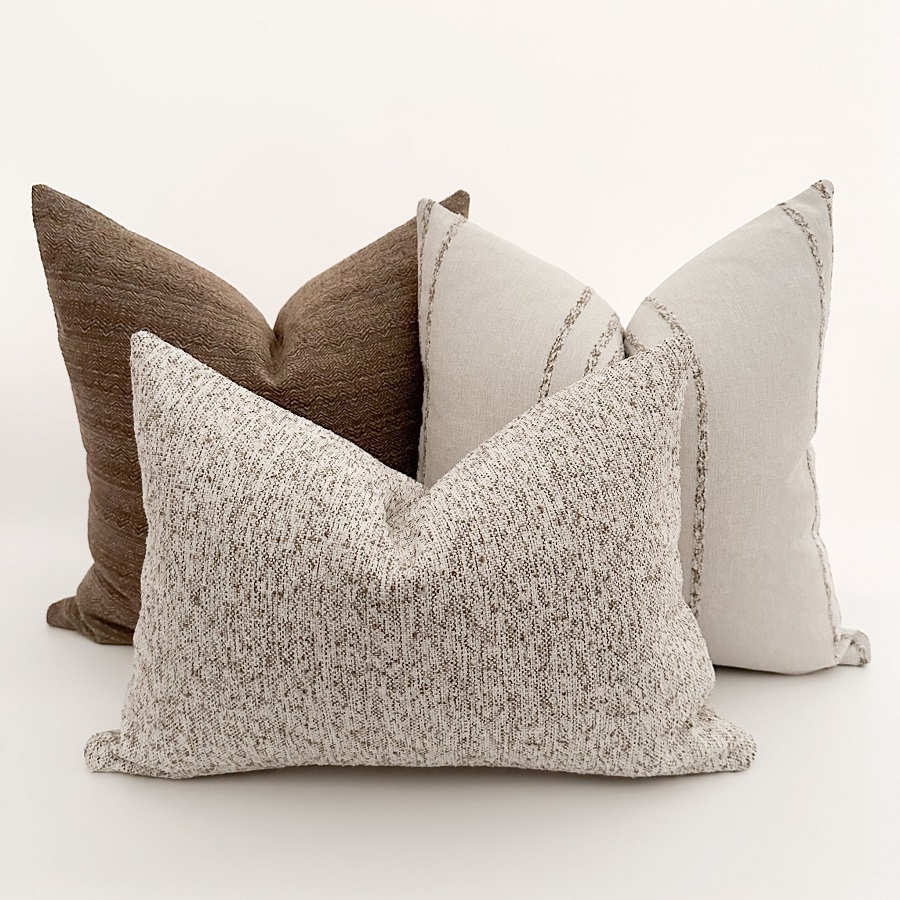
Conclusion
Choosing the perfect pillow cover can dramatically change the look and feel of your space. By considering factors such as material, pattern, color, size, and style compatibility, you can enhance your home decor and express your personal style. Whether you’re looking for a subtle update or a bold transformation, the right pillow covers can create a cozy and inviting atmosphere, making your home a true reflection of you. So go ahead, transform your space, and let your inner designer shine!
